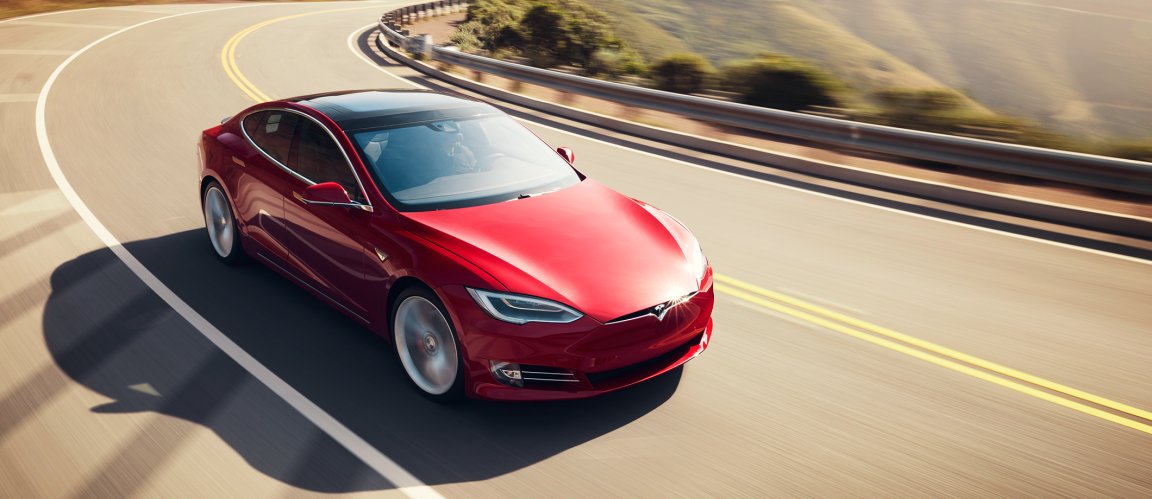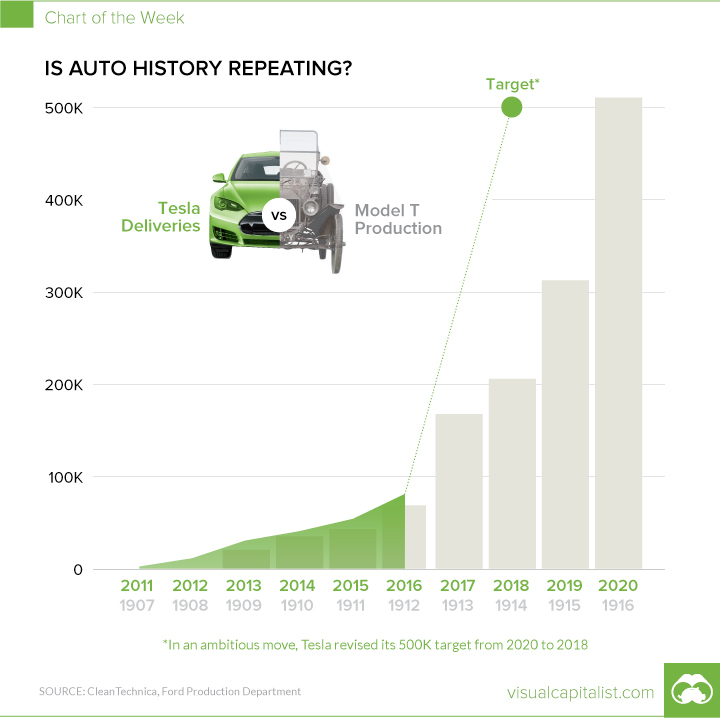
Vehicular Deja Vu
In 1908, Henry Ford began producing his Model T. Exactly one century later, production kicked off on Tesla’s first vehicle, the Roadster. Though a hundred years and some major tech innovations separate the two events, the trajectory of Elon Musk’s company seems to be paralleling the mainstream adoption of the first affordable, mass-produced car.
This trend is clearly illustrated in a recently released chart by Visual Capitalist, which highlights both Ford’s production numbers and Tesla’s vehicle deliveries. Five years after the first Model T was produced, Ford reached an annual production of 100,000 units. In 2016, five years after starting production on its Model S, Tesla produced 83,922 vehicles.
In the 1920s, Ford’s production skyrocketed, with more than 1 million units being produced each year. Tesla recently moved up its annual production target of 500,000 vehicles from 2020 to 2018, which would have it trending ahead of Ford. However, just like its predecessor, Tesla will need a little help from outside its production factories to reach world-changing numbers.

A Better Network
When Ford was first working to revolutionize transportation, he faced an obstacle that couldn’t be fixed by an assembly line: an underdeveloped system of roads. However, thanks to the affordability of his Model T, more Americans bought cars, and the U.S. government was able to use gasoline taxes to build better, more extensive roads to support them.
While the country now has no shortage of roads, what it does lack — at least in the minds of prospective EV owners — are charging stations. With Tesla poised to double its Supercharger network in 2017 to support the release of its own affordable vehicle, the Model 3, one of the biggest barriers to EV adoption comes crashing down.
If all goes according to plan, Tesla seems aptly prepared to continue in the tracks of Ford, only this transportation revolution will benefit both drivers and the environment.